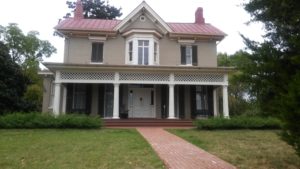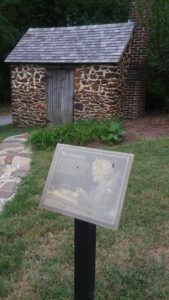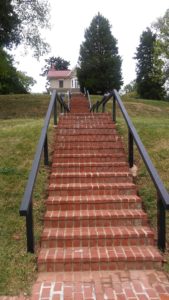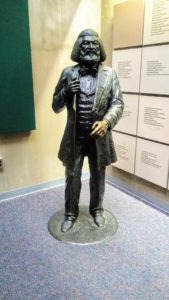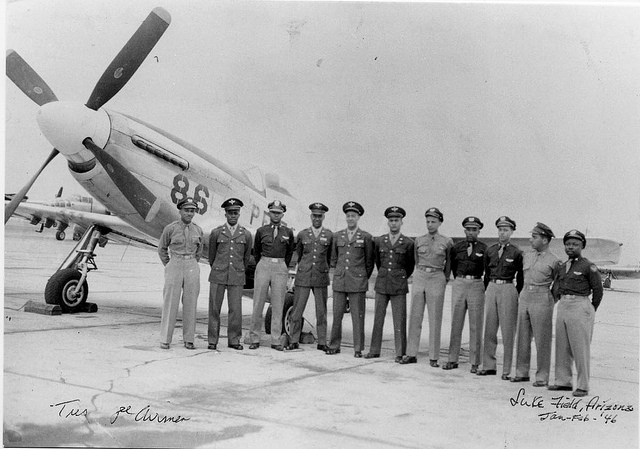Frederick Douglass, a runaway slave turned abolitionist, bought his home on Cedar Hill in 1877 for $6,700.00 from the Freedmen’s Saving Company (1). This home is located in Anacostia, a now-historic area in the southeast region of Washington D.C. At the time of purchase, this estate sat at 9.25 acres. Frederick Douglass purchased this home late in his life and spent as much time as he could here with family and friends. Upon his death, his wife set about the task of preserving his legacy by creating the Frederick Douglas Memorial and Historical Association. In partnership with the National Association of Colored Women’s Club, this association raised funds to preserve the home in 1916 (2); however, the home grew in disrepair in the years following that effort.
In 1962 Frederick Douglass’s house on Cedar Hill was designated a park within the Department of the Interior (3). There were additional buildings on the estate when Douglass was alive, but they are no longer there. Today, in addition to Douglass’s home, a visitor’s center is on the property and the Growley (Frederick Douglass private den).
Visiting this site was a special treat for me because after learning about Frederick Douglass’s life, I admired him and his quest to free himself from slavery and work as an abolitionist to free all those who were enslaved. He went from being the property of another human being to working on behalf of the federal government as an ambassador. That within itself is a heck of a life’s journey.
The home on Cedar Hill is open almost every day, aside from Thanksgiving, Christmas, and New Year’s Day. Extreme weather can also cause the site to be closed; however, you would have to contact the site directly to find out additional information about closures during these times. The visitor center was our first stop when we arrived at the site. Inside the visitors center, you will find a few memorabilia pieces that belonged to Frederick Douglass, including a plastered mask of his face taken not very long after his death. What’s interesting to note about the mask is if you look close enough, you will see strands of his hair that got caught in it as they were taking it off. You can also watch a movie on the life of Frederick Douglass and pick up a few items from the gift shop.
You are free to walk about the site’s grounds; however, you have to make a reservation for tickets to tour the home’s inside. These reservations can be made via the National Park Service website or in person. Just a note, I would highly recommend that you reserve your tickets well in advance because depending on the day you want to go, there may not be enough spaces available for same-day tickets.
Walking the grounds of Frederick Douglass’s home is extremely relaxing, and I definitely understand why he did it as much as he could when he was home on Cedar Hill. Getting to the house from the visitor’s center, you have to climb over 100 brick laid steps (see photo above) to the top. Please note that walking the steps is not the only way to get to the home; there is a wheelchair accessible route. The park ranger meets you on the front porch of the home, and from there, you begin the tour. There are so many fascinating things within the home, and it’s exciting to hear the stories that were told about his life both before living on Cedar Hill and during.
One important thing to note about the home is the view, which is absolutely breathtaking. From the porch, you can see both the Washington Capitol and the Washington Monument in the distance.
The life of Frederick Douglass is paramount to the American experience, and visiting the home that he had so much pride in, is something that every American should do once in their lifetime.
Location:
1411 W Street SE
Washington, DC 20020
Fee to Visit:
There is no fee to visit this site.
For More Information:
Visit the National Park Service website for additional information about the Frederick Douglass National Historic Site here.
Citation:
(1-3) Coxe Toogood, Anna. Frederick Douglass Home, Cedar Hill, Historic Grounds Report. Anacostia, Washington D.C., National Park Service, U.S. Dept. of Interior.


